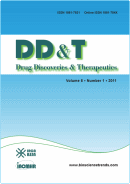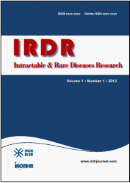BioScience Trends. 2025;19(4):445-455. (DOI: 10.5582/bst.2025.01208)
Textbook outcome and survival following laparoscopic versus open right hemihepatectomy for hepatocellular carcinoma: A propensity score-matched study
Ji J, Hu D, Wang J, Hou Z, Zhang Z, Wang H, Huang J
The role of laparoscopy for complex resections like right hemihepatectomy for hepatocellular carcinoma (HCC) remains contentious, and its assessment is often hampered by traditional metrics that fail to reflect the comprehensive quality of perioperative management. Therefore, this study used the textbook outcome (TO), a composite endpoint, to compare the laparoscopic (LRH) and open (ORH) approaches for HCC within a propensity score-matched (PSM) analysis. We retrospectively analyzed 435 patients who underwent curative-intent right hemihepatectomy. After 1:3 PSM, a final cohort of 121 patients who underwent LRH and 242 who underwent ORH was included for analysis. Results indicated that the rate of TO achievement was comparable between the LRH and ORH groups (62.0% vs. 65.3%, p = 0.563), with intraoperative complications (17.4%), post-hepatectomy liver failure (14.9%), and major postoperative complications (13.5%) as the primary barriers to achieving a TO. No significant differences in overall survival (OS) or disease-free survival (DFS) were observed, although the LRH group had a significantly shorter duration of hospitalization (p = 0.006). In multivariable Cox regression models, achieving a TO was confirmed as an independent protective factor for both OS (HR: 0.46, 95% CI: 0.34-0.63, p < 0.001) and DFS (HR: 0.44, 95% CI: 0.33-0.58, p < 0.001). For right hemihepatectomy, clinical practice should focus on maximizing the rate of TO achievement through systematic perioperative management, as a key strategy to improve long-term prognosis.







